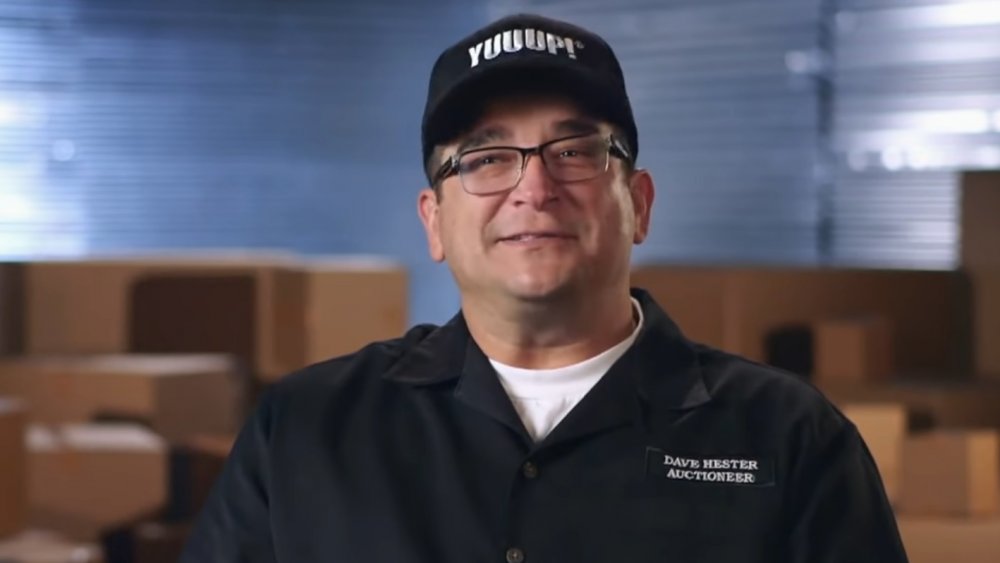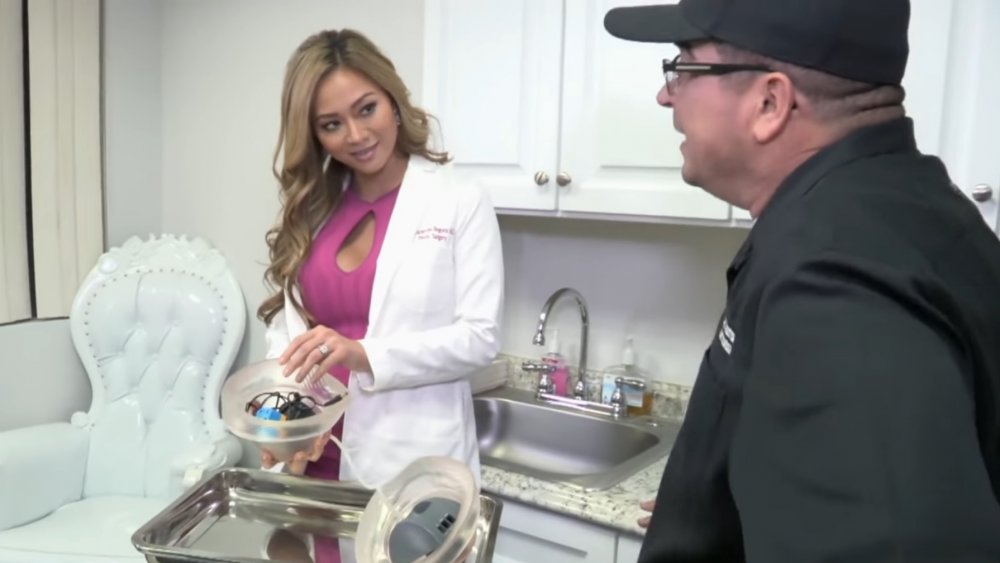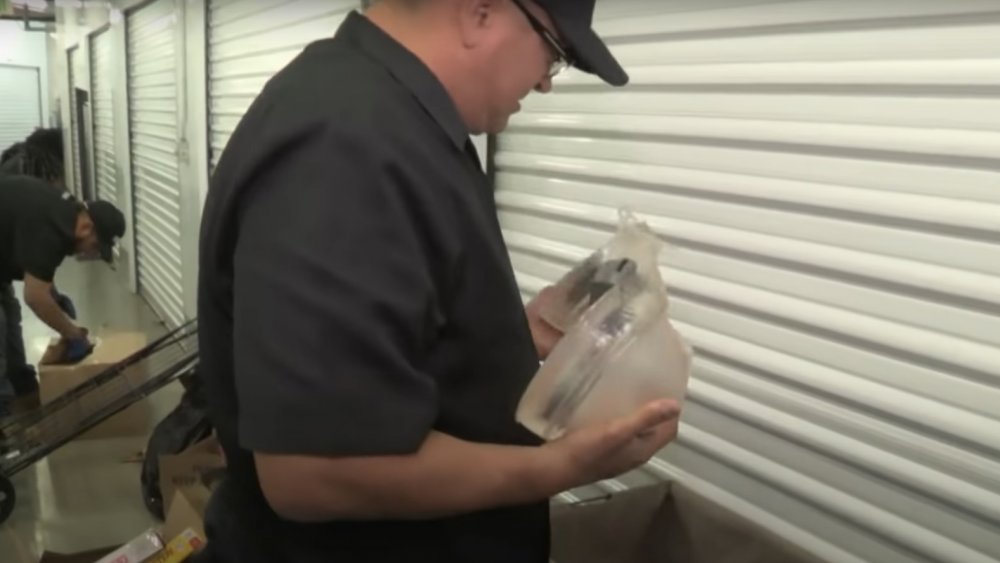Dave Hester's Most Bizarre Storage Wars Find Ever
The joy of A&E's Storage Wars is in the show's variety. There are the cast members who battle to outbid each other, each of whom brings their own quirky charms to the proceedings. The goodies they uncover from the actual storage lockers are also unpredictable and unique. Some lockers contain literal treasure troves of one-of-a-kind valuables, while others are full of items just waiting to be taken to the dump. Sometimes, though, they contain things in the realm of the truly bizarre.
Throughout the run of the series, there have been lots of wild discoveries, from a clock in the shape of a skull to a literal nest of Burmese pythons. Nearly every bidder has had at least one "Wait, what?" experience on the show, and that's particularly true of Dave Hester.
Dave is one of the original members of the cast, having appeared in all but one season of the show's impressive run. Known as The Mogul, he's run a number of thrift stores and auction houses throughout the years, but that doesn't mean he's immune from being gobsmacked when a particularly odd item crosses his path. That's exactly what happened during an episode in which Dave was sifting through a box he pulled from a storage locker full of otherwise unremarkable items. In the midst of a bedroom set and some used clothing, he uncovered a large pair of plastic suction cups that were so befuddling he had to seek a second opinion from a medical professional.
Dr. Cat Begovic schooled Dave Hester on his breast enhancement machine
The device that Dave found looks like it belongs in a museum of medical oddities, rather than a plastic bin in some random person's storage locker. It consists of two large silicon domes connected by plastic tubing and attached to a motor of some kind. Although he wasn't exactly sure what it was, he quickly surmised based on the shape that the machine had something to do with breasts.
He turned out to be right on the money. In a moment of reality TV synchronicity, Dave took the device to Dr. Cat Begovic, a plastic surgeon who currently co-stars on E!'s reboot of their classic show Dr. 90210. As someone with an advanced specialty in the area, she was able to tell Dave exactly what he had on his hands: a breast enhancement machine.
As Dr. Cat (as she calls herself) explained, the machines were "marketed as an alternative to breast augmentation." However, her side-eye and the way she spoke about the devices in the past tense should give you a good idea of her concern that the oversized suction cups might put her out of business. Although Dr. Cat admitted that some people still make use of such devices, she noted that Dave's set was missing the vest meant to hold the cups in place, and that the most he should expect to get for it is $400.
Dave concluded their segment with a very inappropriate joke about the breast enhancement machine. Thankfully, the good doctor was more than capable of putting him in his place.
Are breast enhancement machines actually effective?
While Dr. Cat gave Dave the basic rundown on the breast enlargement machine, she didn't get into the nitty-gritty of these unusual devices. So, what is the story behind these at-home breast enlargement machines?
An essay by Dr. Ed Hassan at Zwivel lays out how these types of suction-based devices work. The premise is not dissimilar from other... well, enlargement pumps: in creating suction on the area, the tissue will stretch. According to Dr. Hassan, "Stretching a tissue stimulates the cells to up-regulate their division rate, deposit more connective tissue between the cells, and realign themselves to expand in the direction in which they were stretched."
These types of suction-based breast enlargement devices have been around since at least the '70s. The Museum of Quackery profiled one particular model that was popular in 1976 and was operated via a foot pump. As the run-down points out, this device was just one of many over-the-counter alternatives to breast augmentation surgery that promised dramatic results but delivered disappointment.
The machines have been shown to potentially cause a small increase in breast size, but the gains are typically very limited and require a serious commitment to using the device. In Dr. Hassan's essay, he points out that a study on their efficacy found that women would need to wear the device daily for 10 weeks for a total of 10 to 12 hours a day. Considering the bulkiness of the device Dave found, that doesn't actually sound like a realistic regime for your average person looking for a modest increase in their cup size.
Of course, even though Dave's bizarre find turned out to not be very useful, he likely got what he was looking for out of it: a quick resale.


